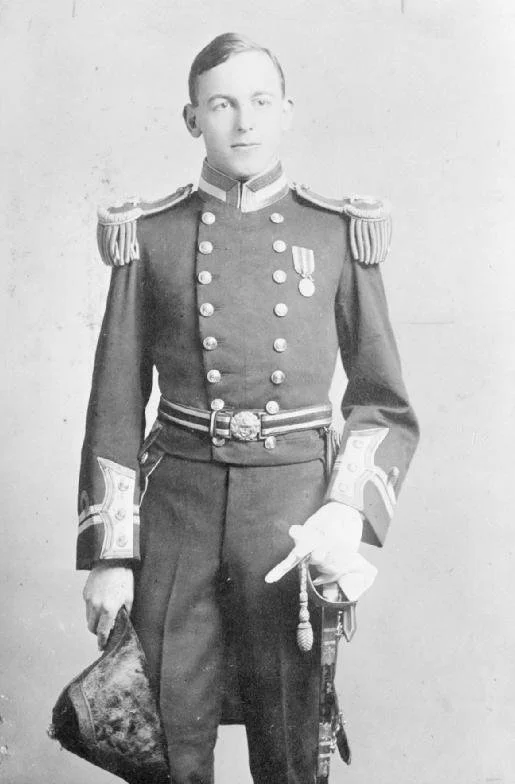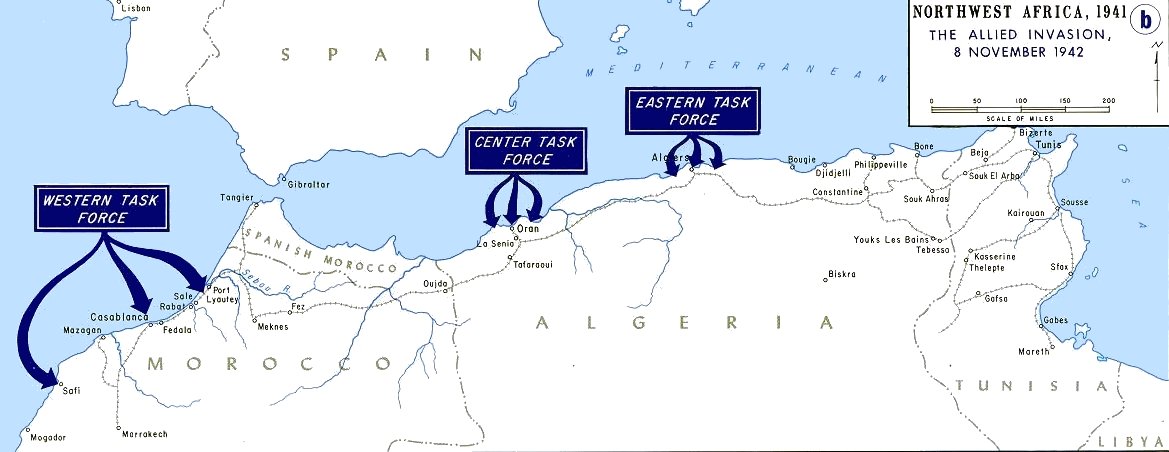The forgotten Hero of Oran: Capt. F. T. ‘Fritz’ Peters, VC
The forgotten Hero of Oran: Capt. F. T. ‘Fritz’ Peters, VC
Born in 1889 on Prince Edward Island, Frederick Thornton Peters enjoyed an affluent beginning to life, being the son of the Attorney General and the province's first Liberal Premier. Privately educated, Peters pursued schooling across Canada, both in his home of Charlottetown and as far west as Victoria, British Columbia. Unlike his father, Peters wasn’t destined to follow in the world of law and governance; instead, unsatiated by life in Canada, he moved to the United Kingdom at the age of 16 to pursue the beginnings of a career with the Royal Navy. A career that would encompass three stints of service, two at war, and which would win him the most prestigious decoration for valour "in the presence of the enemy" that can be awarded to someone in service of the Crown.
In 1905, following the completion of his cadet training, Peters was posted to the Royal Navy’s Channel Fleet as a midshipman serving aboard HMS Vengeance, and HMS Duncan, protecting the key approaches to the United Kingdom’s ports and its trade with its far-flung Empire. During service aboard HMS Duncan, the flagship of Rear Admiral Sir George A. Callaghan, Peters’ led shore parties during the evacuations after the Messina earthquake, in 1908. After three years of performing his duties, Peters received his commission as a sub-Lieutenant and was posted to the far-flung Wei Hai Wei on Liugong Island - home to the Royal Navy’s China Station, where he would serve aboard HMS Otter, and Welland.
At the age of 23 and having reached the rank of full Lieutenant, Peter’s decided his service with the Royal Navy should come to an end, and retired. Returning to British Columbia, he took up work with the Canadian Pacific Railway, working on a host of vessels across the province's internal waterways, like at Kootenay Lake. For almost two years Peter’s enjoyed the peacefulness of Canada’s westernmost province before it was rudely interrupted by the outbreak of war, half a world away, in Europe.
In October 1914, the First World War had begun and Peters volunteered to return to service, promptly reassuming his rank of Lieutenant. Serving aboard HMS Meteor (D84 - 1914) a Thoryncroft M-class destroyer, Peters formed part of the Hawrich Striking Force under the command of then-Commodore Reginald Tyrwhitt with the task of securing the approaches to the English Channel to prevent elements of the Kaiserliche Marine, the Imperial German Navy, from breaking out into the Atlantic, and interfering with Allied maritime trade and troop convoys.
Captain Frederick Thornton Peters, circa 1910
Born in 1889 on Prince Edward Island, Frederick Thornton Peters enjoyed an affluent beginning to life, being the son of the Attorney General and the province's first Liberal Premier. Privately educated, Peters pursued schooling across Canada, both in his home of Charlottetown and as far west as Victoria, British Columbia. Unlike his father, Peters wasn’t destined to follow in the world of law and governance; instead, unsatiated by life in Canada, he moved to the United Kingdom at the age of 16 to pursue the beginnings of a career with the Royal Navy. A career that would encompass three stints of service, two at war, and which would win him the most prestigious decoration for valour "in the presence of the enemy" that can be awarded to someone in service of the Crown.
In 1905, following the completion of his cadet training, Peters was posted to the Royal Navy’s Channel Fleet as a midshipman serving aboard HMS Vengeance, and HMS Duncan, protecting the key approaches to the United Kingdom’s ports and its trade with its far-flung Empire. During service aboard HMS Duncan, the flagship of Rear Admiral Sir George A. Callaghan, Peters’ led shore parties during the evacuations after the Messina earthquake, in 1908. After three years of performing his duties, Peters received his commission as a sub-Lieutenant and was posted to the far-flung Wei Hai Wei on Liugong Island - home to the Royal Navy’s China Station, where he would serve aboard HMS Otter, and Welland.
At the age of 23 and having reached the rank of full Lieutenant, Peter’s decided his service with the Royal Navy should come to an end, and retired. Returning to British Columbia, he took up work with the Canadian Pacific Railway, working on a host of vessels across the province's internal waterways, like at Kootenay Lake. For almost two years Peter’s enjoyed the peacefulness of Canada’s westernmost province before it was rudely interrupted by the outbreak of war, half a world away, in Europe.
In October 1914, the First World War had begun and Peters volunteered to return to service, promptly reassuming his rank of Lieutenant. Serving aboard HMS Meteor (D84 - 1914) a Thoryncroft M-class destroyer, Peters formed part of the Hawrich Striking Force under the command of then-Commodore Reginald Tyrwhitt with the task of securing the approaches to the English Channel to prevent elements of the Kaiserliche Marine, the Imperial German Navy, from breaking out into the Atlantic, and interfering with Allied maritime trade and troop convoys.
Peters and HMS Meteor would have a distinguished career together, where at the Battle of Dogger Bank, he formed part of a force including the 1st and 2nd Battlecruiser forces under the command of Admiral David Beatty and Rear Admiral Gordon Moore, which was tasked with intercepting an approaching German fleet under the command of Rear-Admiral Franz Von Hipper which had sortied to disrupt British fishing vessels.
On the morning of 24th January 1915, HMS Meteor, one of seven M-class destroyers —the fastest available to the Royal Navy—steamed ahead of the force, looking to locate and reconnoitre the enemy. This they did; however, in straying too close, they came under the fire of the cruiser Blucher. At around 11:00 am, after manoeuvring and skirmishes from both forces, Meteor led three other destroyers in a torpedo attack against the now-damaged Blucher. During this engagement Meteor, with Peters aboard, was struck by a shell in her forward boiler room, knocking her out of action and killing four of her crew. It is during this shelling that Peters was awarded the Distinguished Service Order for his courageous efforts in saving wounded sailors from the ablaze boiler room.
Despite being damaged, HMS Meteor would be towed to the Royal Navy’s Humber Station, Immingham - a fate far better than that of the Blucher, which eventually succumbed to subsequent shelling from HMS Indomitable. Meteor would return to service in short order, and Peters along with her, performing primarily minelaying operations during which she laid some 1,082 miles, and anti-submarine operations; Meteor also made a notable appearance at the Battle of Jutland (June, 1916).
In 1917 Peters’ would be given his own command, as the Commanding Officer of the sloop HMS Polyanthus during which his outstanding “initiative, skill, and fearlessness” during anti-submarine operations, would see him further awarded the Distinguished Service Cross. 3 months later he was given command of the destroyer HMS Cockatrice in 1918 where he continued conducting anti-submarine and minelaying operations.
Peters would remain with HMS Cockatrice until the 26th June 1920, where, at the rank of Lieutenant Commander, he retired at his own request from the Royal Navy, again. A year later, HMS Cockatrice would be retired from service and scrapped. Over the next 21 years Peters split his time between Canada, the United Kingdom, and Britain’s Gold Coast, modern-day Ghana, where he is noted as working on components for midget submarines; and also, growing cocoa. It is during this period of retirement, on the 7th September 1929 where he was promoted to the rank of Commander on the retired list, should he return to service.
10 years later, his retirement from Britain’s senior service would again be over, and once more for the same reason as it had in 1913 - hostilities had broken out in Europe; and Germany was once again the enemy.
Answering the Call a Third and Final Time
In October 1939, a month after the Allied powers of Great Britain and France declared war on Nazi Germany following the invasion of Poland, now at the age of 53, Peters reenlisted with the Royal Navy, and was made the commander of an anti-submarine flotilla of trawlers, leading from HMS Thirlmere; continuing in a similar role as he had in the First World War; defending the coastal waters separating the United Kingdom from Europe; and through which the Islands lifeline was hosted. Following a period of success in this role in August 1940, Peters was transferred to the Secret Intelligence Service, becoming the 1st Commandant of the ‘School for Destruction’ at Brickendonbury Estate. Here, for a little over a year, Peters taught operators of ‘Section D’ elements of guerrilla warfare and sabotage, until, missing life at sea, he resigned from his post and returned to the Navy.
Peters’ first command after his stint in schooling came in August 1941 with HMS Tynwald, an auxiliary anti-aircraft ship performing escort duties for convoys transiting Britain's home waters. One source notes that Peters’ and HMS Tynwald were posted to the Far East during this time; however, we have been unable to locate supporting records of this.
Despite Peter's lust for the open sea, his posting with HMS Tynwald would end in August 1941 as he returned to England a Acting Captain (A/Capt). Once more, Peter was behind a desk, but this time, he assumed the duties of a Special Operations and Naval Planner - helping put together key elements for the upcoming Allied invasion of North Africa, codenamed Operation Torch. This included, unknowingly, the very operation for which he would inevitably be awarded his Victoria Cross. In this planning roll Peters had the privilege of advising the Admiralty’s of both the Royal and American Navies as well as British Prime Minister, Winston Churchill.
Operation Torch, Reservist, and a Victoria Cross
The culmination of Peters’ career came during the frontal assault on the Vichy French Harbour of Oran, as part of Operation Reservist, a sub-element of Operation Torch. Operation Torch, which took place between the 8th and 16th November 1942, consisted of three elements: a Western, Centre, and Eastern assault stretching from Safi and Casablanca in Morocco to Algiers, Algeria.
It was in this Centre element that Peters would play his pivotal role, targeting the Vichy French port of Oran—located some 180 miles west of Algiers, roughly halfway between it and Gibraltar. The harbour housed a sizable fleet of French warships, but its true strategic value lay in the key berthing facilities essential for Allied operations across North Africa and the western Mediterranean, making its swift conquest a top priority for planners.
The force assembled to achieve this task consisted of some 18,500 men, supported by 180 tanks from the 16th, 18th and 26th Regimental Combat Teams, First Ranger Battalion, and Armoured Combat Command B.
The arrangement of landing beaches at Oran was comparatively simple to the others of Operation Torch, and later, Operations Husky, and Overlord. Consisting of three main beaches ‘X, Y, and Z,’ this force split between them.
Under the command of Senior Naval Officer Landing (S.N.O.L.) Captain G. R. G, Allen, a column of Armoured Combat Command B would land in Sector ‘X’ at Bou Zadjar, advancing onto the La Lourmel Airfield and severing main roads around La Lourmel, before continuing on to south of Debkra to assist in the capture of the airfields at Tafaroui and La Senia.
The 26th Regimental Combat Team would land under the direction of S.N.O.L. Captain E. V. Lees in Sector ‘Z’ near to El Ançor where they would advance onto the Jebel Murjajo heights, before descending onto Oran from the west.
Simultaneously, under the command of S.N.O.L Captain C. D. Graham, the 16th and 18th Regimental Combat Teams and remainder of Armoured Combat Command B would come ashore in Sector ‘Z’ at Aïn Bya to the east of Oran. The 18th Regimental Combat Team would capture coastal defences, the port of Arzeu and then advance onto Oran from the East; whilst the 16th Regimental Combat Teams secured a bridgehead for Armoured Combat Command B which would then advance south at speed capturing Tafaroui, La Senia, and Oggaz airfields before turning to the north and advancing on Oran from the south.
A portion of the First Ranger Battalion would make a subsidiary landing in Sector ‘R’ southwest of Cape Carbon, close to Sidi Moussa to capture the batteries at Fort La Pointe; whilst the remainder of the Battalion landed in Sector ‘Z.’
Departing from Gibraltar, the invasion forces for Operation Torch presented themselves as convoys destined for Malta and further afield, but as the force neared the Centre (Oran) and Eastern (Algiers) landing points, the landing forces split, and rendezvous before approaching their landing zones. Off the coast of Oran, the Centre element under the command of Commodore Thomas Troubridge
And so, off the coast of Oran, the Centre element under the command of Commodore Thomas Troubridge rendezvoused and split, forming into smaller groups, before heading for their sectors. Aboard, he is joined by Major Generals Lloyd Fredendall (US Army, and the ground contingents overall commander) and James Doolittle (USAAF) .
Despite some delays in Sectors X and Y, the invasion went off without a hitch, and American troops quickly secured their beachheads before advancing onto their targets. That is, save for the air assault by the 2nd Battalion, 509th Parachute Infantry Regiment, which had flown from England, via neutral Spain as to avoid Vichy France, to Oran, to capture the airfields of Le Senia and Tafraou, which was led astray by foul weather, and scattered by foul weather. Those elements which continued onto Oran reached Tafaroui and encountered flak, and moved to land at La Lourmel.
As the landings at Sectors ‘X,’ ‘Y,’ and ‘Z’ were underway, fears grew that the Vichy French defenders within Oran would learn of the pending Allied assault and would act quickly to not only render the harbour, and its facilities inoperable; but also scuttle or set to sea the French warships docked within. These fears were not without merit, as the defenders of Oran were already on alert, readying themselves for a potential assault.
As fears grew that Oran’s facilities might be destroyed, Commodore Troubridge ordered Operation Reservist to go ahead which would see two Royal Navy, Banff-class sloops, HMS Hartland and Walney conduct a frontal assault on the harbour, charging within its protective quay and disembarking a force of American infantry stowed away aboard
Want to read more?
This is part of our ongoing research into Canada’s naval heroes. Support us on Patreon to read the full story early and access exclusive archives and maps.
Support the Mission — Join Project ’44 on Patreon
Project ’44 is being completely rebuilt from the ground up — a next-generation platform that will allow anyone to explore the Second World War day-by-day, unit-by-unit, across every front. Your support on Patreon helps us fund that transformation and keep this history accessible for everyone, forever.
Why Your Support Matters
Rebuilding History: Every dollar helps us digitize war diaries, maps, and operational records to bring the story of the Second World War to life in a modern, interactive way.
Powering Project ’44 2.0: Patreon funding goes directly toward development of our new open-source mapping framework — the same engine powering Project Athena.
Preserving Access: Unlike most projects, our maps and archives remain free to the public. Patreon ensures they stay that way.
What You’ll Get as a Patron
Early Access: See new web map features before public release — from live unit tracking to visual themes and campaign overlays.
Exclusive Updates: Patron-only blog posts, behind-the-scenes research notes, and monthly development insights.
Discounts: Save on story maps, research services, and upcoming battlefield tours.
Recognition: Unique profile banners and badges on the Project ’44 map.
Community Access: Join our Discord for direct discussions with our team, historians, and fellow contributors.
Be Part of History
By joining Patreon, you’re not just supporting a website — you’re helping preserve and share Canada’s story on the world stage. Together, we can map every front, every unit, every day.







